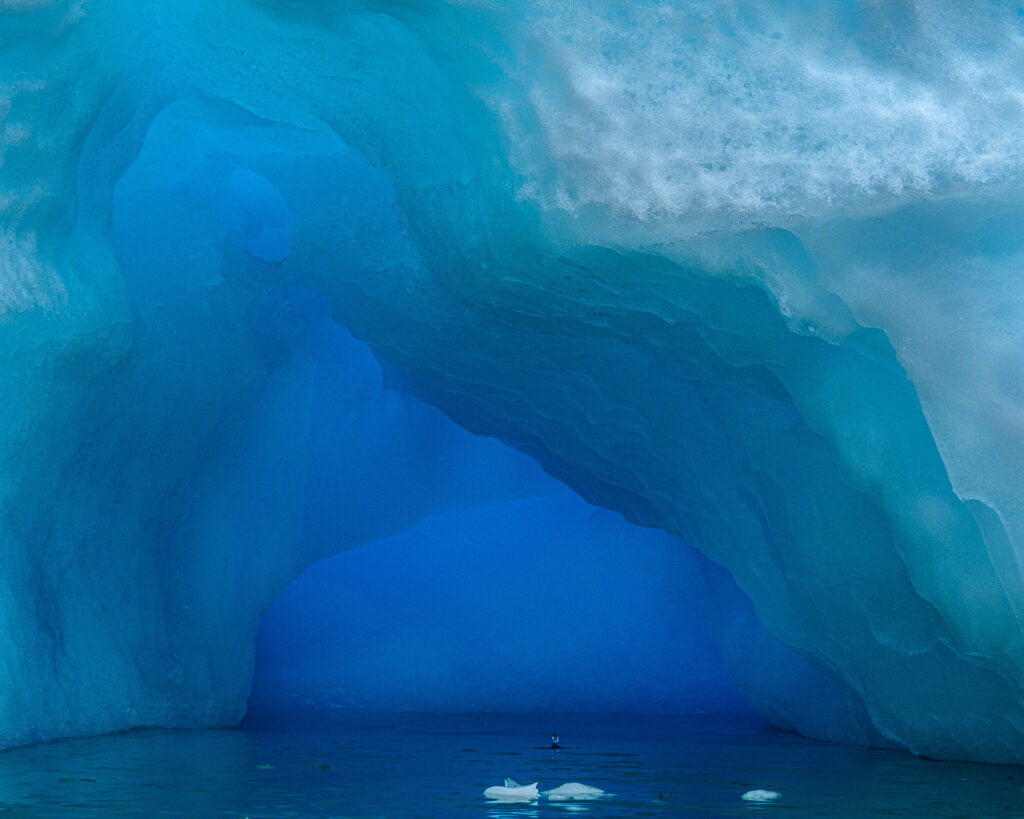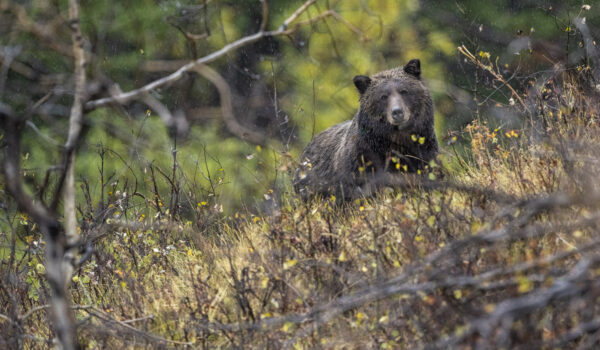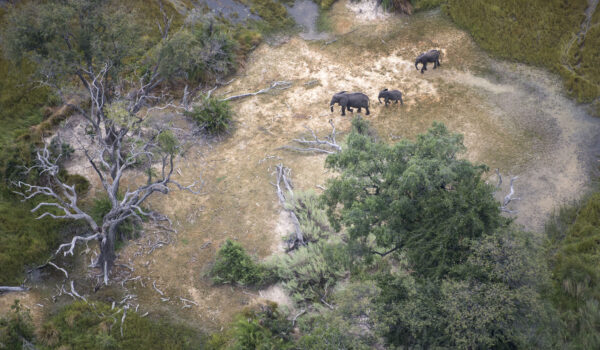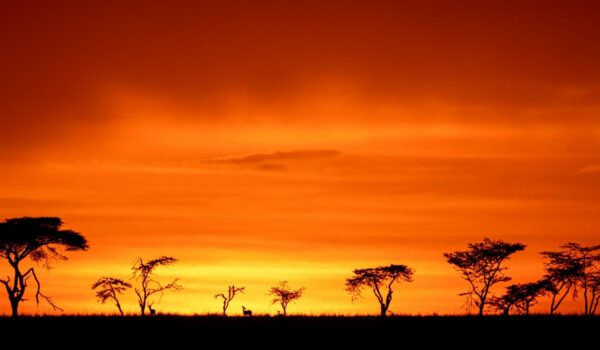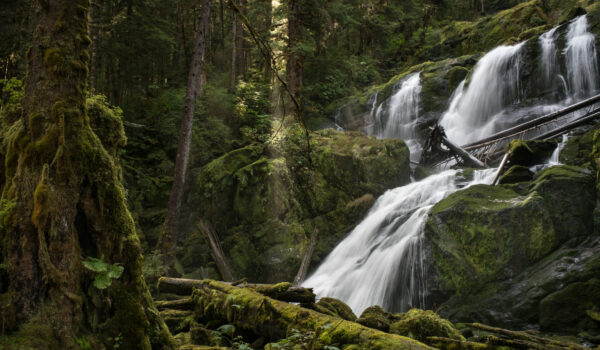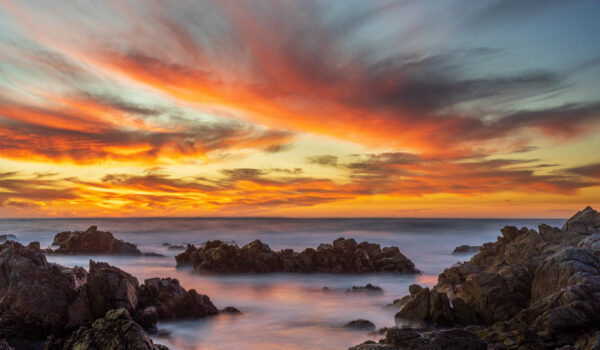Originally published in Outdoor Photographer in December 2020
The ship pitches and rolls among the swells that send sea spray high into the air as the metal prow slaps against the water. My eyes are fixed straight ahead, straining to see the horizon, lost in the endless span of blue-white. An albatross skims across the scene, dipping its wing into a wave before disappearing into the mist. The only break in the ongoing rhythm and roar between the ship and the ocean is from my shipmates, many of whom are green and groaning with seasickness. Our two-day trek through the world’s roughest seas, known as the Drake Passage, was indeed an adventure in itself.
As we navigated the Beagle Channel at the very bottom of South America, I wondered if Antarctica would live up to my childhood dreams. Or if, like most childhood dreams, the world’s coldest, driest continent wouldn’t match the photographs I’d already made in my imagination.
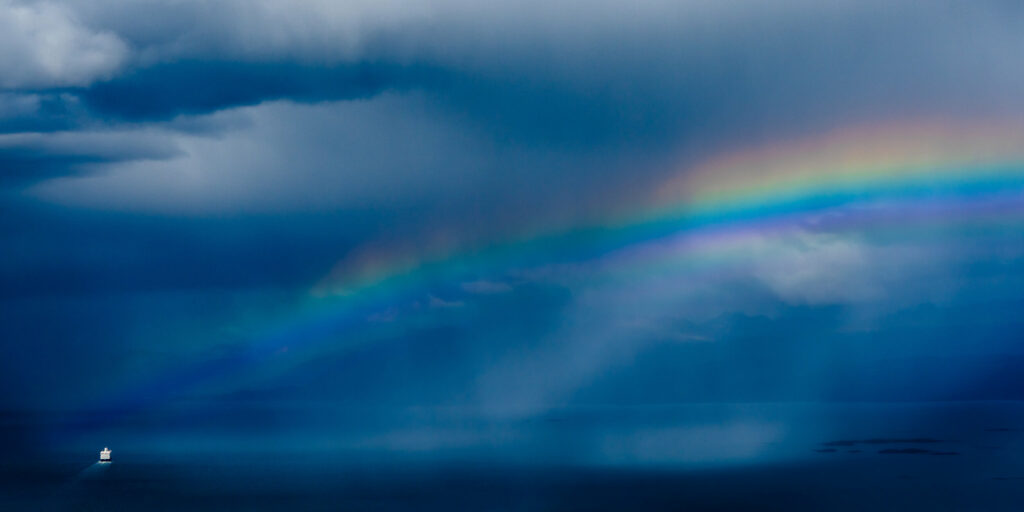
Antarctica’s Enduring Mystique
Antarctica intrigued me long before I became a photographer. I grew up reading the extraordinary accounts of Captain Robert Falcon Scott, Roald Amundsen, Sir Douglas Mawson and Sir Ernest Shackleton, and the entire continent grew to mythic proportions in my mind. By contrast, Captain James Cook found himself frustrated by impassable ice in 1773, declaring Antarctica to “not be worth the discovery.” I longed to see for myself what this land of mystery was really all about.
The thought of enduring the Drake Passage only to be dumped out on the ice to try and survive isn’t something I can begin to imagine. We caught a glimpse of this when we landed at Port Lockroy, also known as “Station A” (the first British Antarctic Survey base, in operation since 1944). Little more than a hut surrounded by penguins, the base was home to meteorologists and geologists for years at a time. The standard stay was 30 months, much of which was in the endless dark of the Antarctic winter.
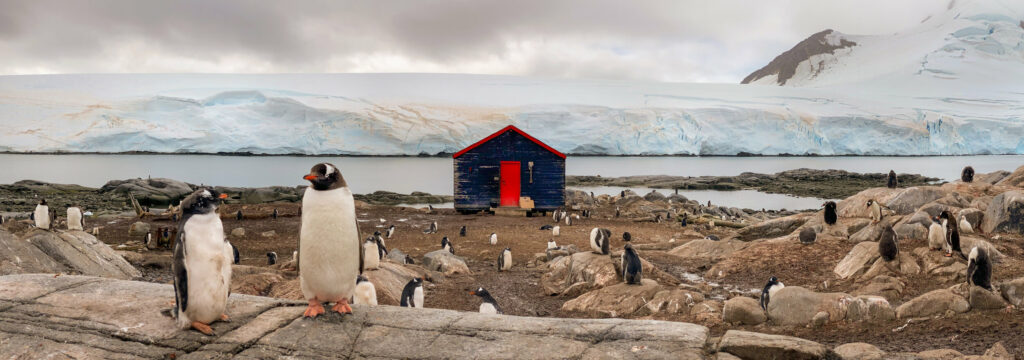
What is the magic of Antarctica? What drives people to cross oceans, endure endless summers and winters and add more layers of clothing than one ever thought possible? Is it truly worth seeing, or is it just intriguing because of its remoteness?
The first answer comes from the icebergs that begin to appear long before reaching the continent. They’re initially small, lonely blocks that have been weathered smooth in their sea voyage. Closer to land, the bergs become more sculptural—profound works of art carved by water and wind. Antarctic regulars even have terminology for different types and sizes of icebergs. The little ones are “growlers,” “bergy bits” are about the size of an SUV, and those that are considered “full-grown” can be larger than football stadiums.
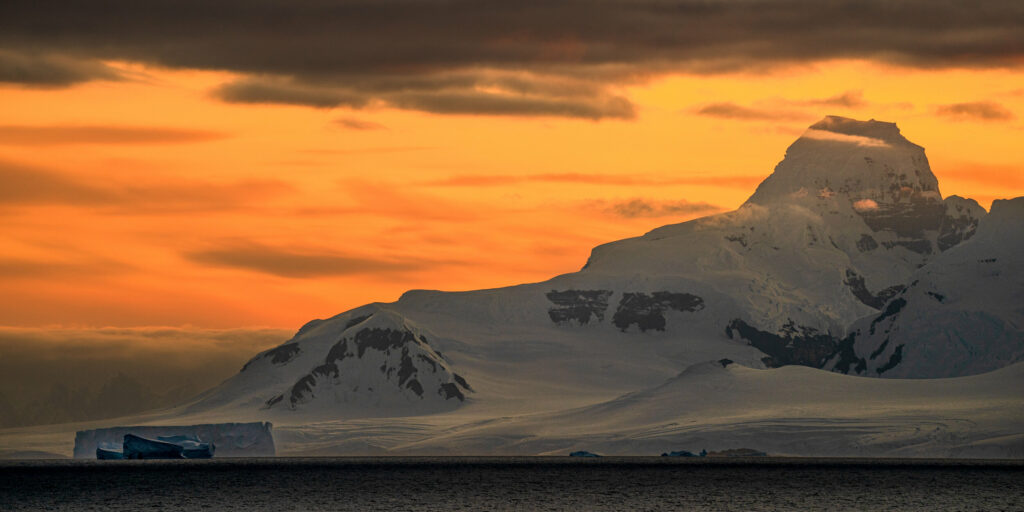
Among The Bergs
The closest thing to icebergs I’d previously photographed were slot canyons in Arizona. Both share the same property of being a little overwhelming to photograph since finding a composition amongst all of the curves can be challenging. Similar to slot canyons, the angle of the sun completely changes the colors of the ice—but icebergs also have the unique element of compression. As glacial ice ages, compression squeezes the air out, leaving behind one of nature’s true wonders: blue ice. The shades of blue range from deep cobalt to almost white, and I eagerly scouted for those hues.
My favorite image of the trip came out of a moment of sheer panic. I was relaxing in shorts and a T-shirt in the ship’s interior when I saw an approaching berg with dozens of parallel, vertical stripes in a beautiful deep blue. I ran barefoot to the open deck, and it was all I could do to slow down, compose my frame, check my exposure and shoot. It was only minutes later that I returned to the warmth of the ship with frozen feet and trembling hands, thrilled with what I saw on my LCD screen.
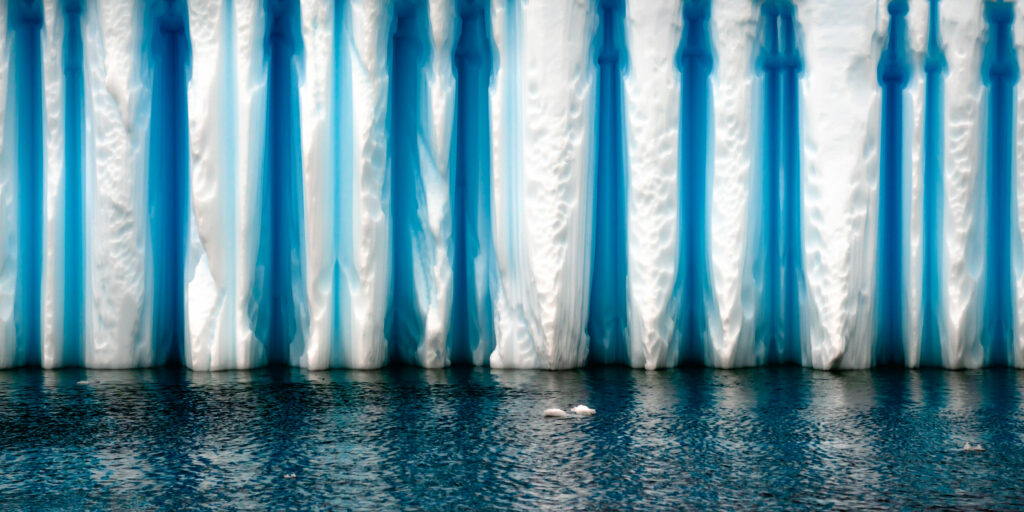
In Pursuit Of Wildlife
While it’s true that icebergs feel quintessentially Antarctic, its wildlife—colonies of penguins and leopard seals that prey on those penguins—is equally as photogenic. What more could a photographer ask for? More time. I could feel every moment ticking by.
To make the most of the time I did have, I not only photographed above water, but I also dove with my underwater gear almost every day; I wanted my shot to make photographs in the crystal-clear Antarctic water. And I had something specific in mind.
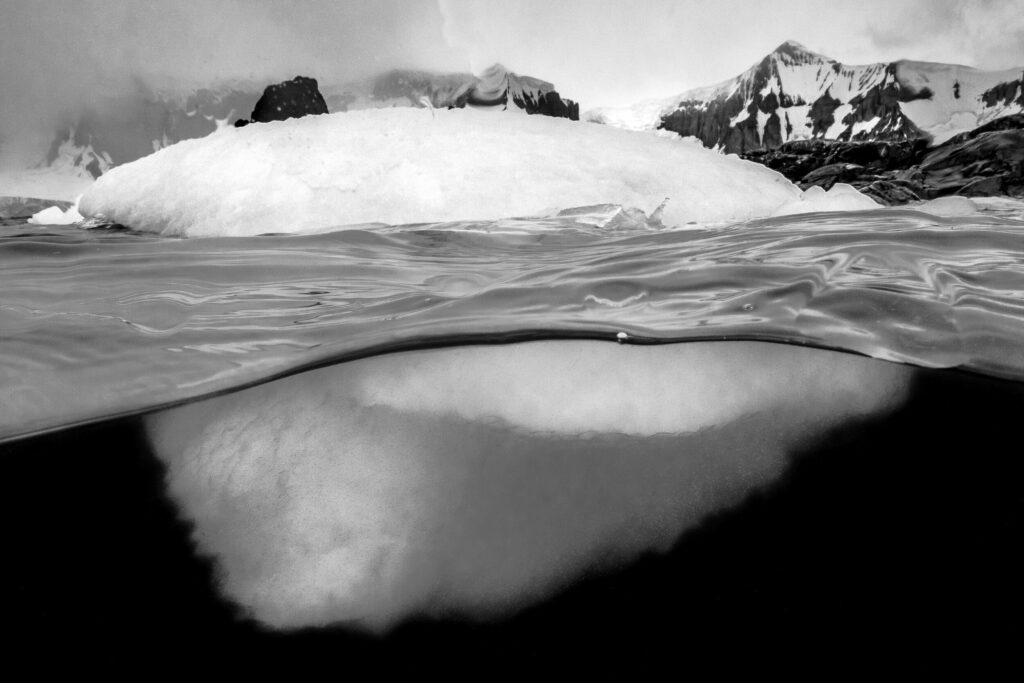
Before I even arrived on the ice, I had pre-visualized a photograph of penguins diving in front of an iceberg. Having found an active penguin colony adjacent to a nicely shaped berg, I geared up and dove in—and proceeded to spend the longest 40 minutes of my photographic career. Floating 15 feet under the surface of 34 degree Fahrenheit water, I waited for the perfectly framed image of mountains, an iceberg and swimming penguins. Low on air and shivering from the freezing water, I climbed back into the boat without having seen a single penguin. Almost immediately, a rush of penguins hit the water. To a tiny penguin brain, a long, darkly clad, bubble-blowing mammal was indistinguishable from a leopard seal, so they stayed dry until the coast was clear to avoid becoming dinner. Survival of the fittest, I suppose.
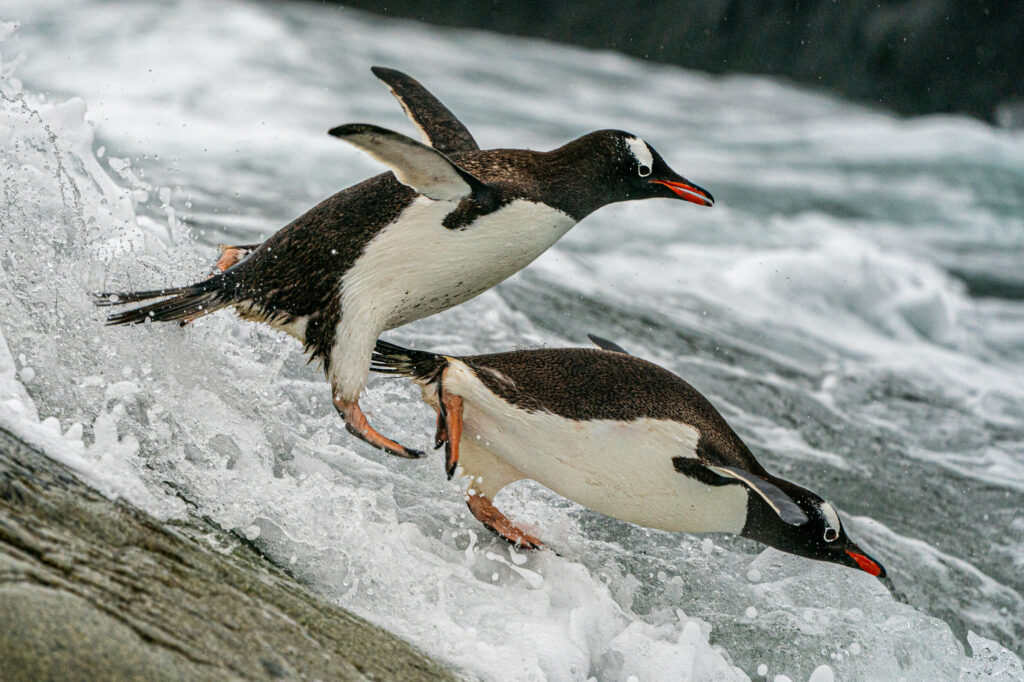
The Dream Shot
As much as the penguins wanted to avoid becoming prey, of all of my hopes and dreams for Antarctica, photographing a leopard seal underwater was my one true bucket list item. While being up close with an apex predator sounds perilous, the danger can be minimized with a good understanding of the animal’s behavior and the environment—just like with most other types of wildlife photography. The main thing to remember is not to stress out the animal, and it probably won’t attack you.
Leopard seals can be elusive, but we were lucky enough to find a few, some lolling about on icebergs, some swimming and some that seemed to lose interest in us the moment they decided we weren’t food. As if to dash my bucket list dreams, none of them were in a dive-friendly setting. The closest we came was with a massive and curious female that slipped off her berg and came to play around our zodiac. The water was clear, the seal was playful, and everything was perfect—except for the tall and potentially unstable iceberg right next to us. The prospect of getting trapped under that didn’t seem like a good idea (nor was it allowed by the guides), so back on the bucket list that dream image went.

Outside The Frame
Beyond photographs, part of my draw to this extraordinary place is that it’s rapidly changing, and we don’t know how long it will actually look and feel as it does today. One of my fellow adventurers took his first trip to Antarctica over 50 years ago, and as we visited places where he’d previously spent time, his commentary of, “There used to be much more ice,” became routine. Like the Arctic, Antarctica is melting. Between 2014 and 2017, the continent lost 16 percent of its ice coverage, according to a study of 40 years of satellite observations reported by the National Academy of Sciences. Due to climate change, this wondrous continent will likely become unrecognizable within our lifetime.
For many of us, Antarctica is a must-photograph—but fickle—destination. It’s an extraordinary commitment of both time and money and is unpredictable when you get there. The question I’ve been asked the most is whether it was worth all of the trouble. Without a doubt, it was. I highly recommend that if you have an interest in seeing this remote wonder, go sooner rather than later.
I know I’ll return. As Jon Krakauer said, “Antarctica has this mythic weight. It resides in the collective unconscious of so many people, and it makes this huge impact, just like outer space. It’s like going to the moon.” And once upon the Antarctic moon just isn’t enough. Besides, I’ve got a bucket list that’s missing my underwater photograph of a leopard seal.
